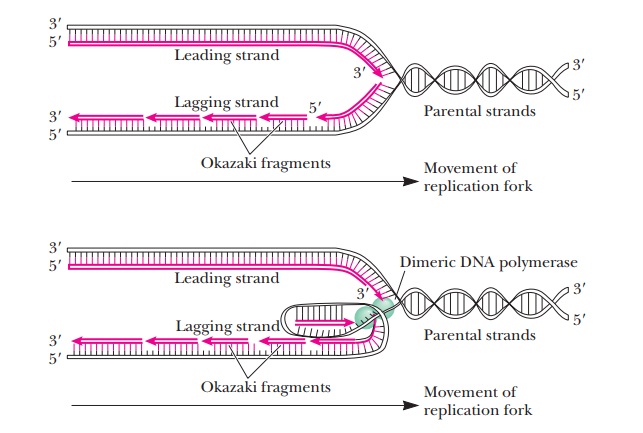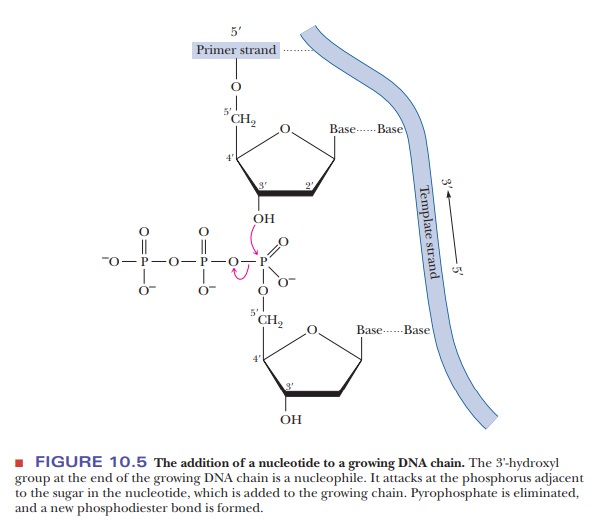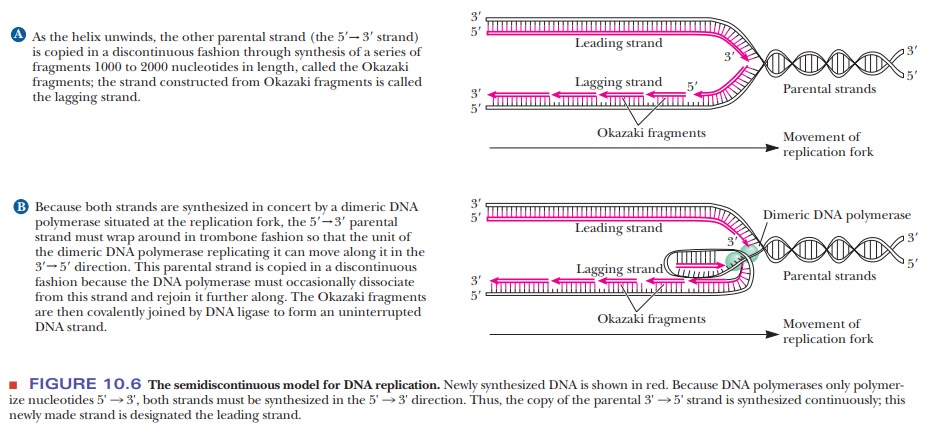Chapter: Biochemistry: Biosynthesis of Nucleic Acids: Replication
Semidiscontinuous DNA Replication

Semidiscontinuous DNA Replication
All
synthesis of nucleotide chains occurs in the 5' - > 3' direction from the
perspective of the chain being synthesized. This is due to the nature of the
reaction of DNA synthesis. The last nucleotide added to a growing chain has a
3'-hydroxyl on the sugar. The incoming nucleotide has a 5'-triphosphate on its
sugar. The 3'-hydroxyl group at the end of the growing chain is a nucleophile.
It attacks the phosphorus adjacent to the sugar in the nucleotide to be added
to the growing chain, leading to the elimination of the pyrophosphate and the
formation of a new phosphodiester bond (Figure 10.5). We discussed nucleophilic
attack by a hydroxyl group at length in the case of serine proteases; here we
see another instance of this kind of mechanism. It is helpful to always keep
this mechanism in mind. The further in depth we study DNA, the more the
directionality of 5' - > 3' can lead to confusion over which strand of DNA
we are discussing. If you always remember that all synthesis of nucleotides
occurs in the 5' - > 3' direction from the perspective of the growing chain,
it will be much easier to understand the processes to come.

This
universal nature of synthesis presents a problem for the cell because as the
DNA synthesis proceeds along a replication fork, the two strands are going in
opposite directions.
How can replication proceed along the DNA if the two strands are going in opposite directions?
The
problem is solved by different modes of polymerization for the two growing
strands. One newly formed strand (the leading strand) is formed continuously
from its 5' end to its 3' end at the replication fork on the exposed 3' to 5'
template strand. The other strand (the lagging strand) is formed
semidiscontinuously in small fragments (typically 1000 to 2000 nucleotides
long), sometimes called Okazaki fragments after the scientist who first studied
them (Figure 10.6). The 5' end of each of these fragments is closer to the
replication fork than the 3' end. The fragments of the lagging strand are then
linked together by an enzyme called DNA
ligase.

Related Topics